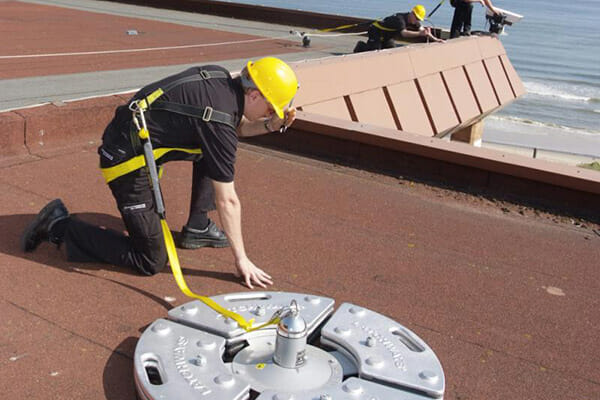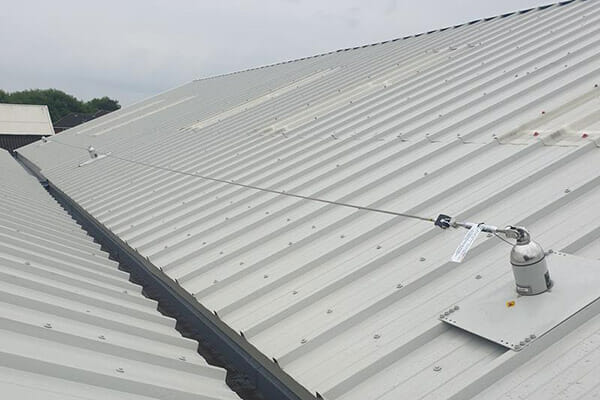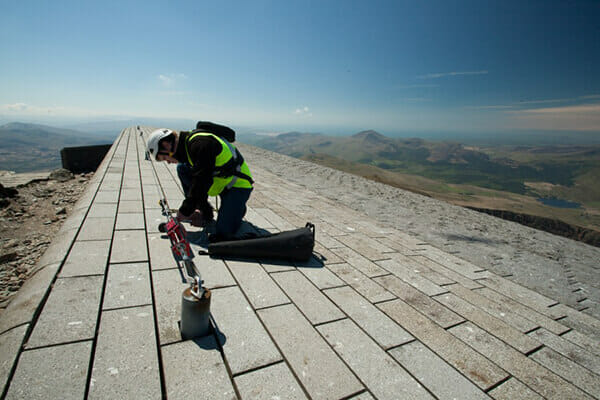Overview of PPE Inspection & Examination.
All Personal Protective Equipment (PPE) used for working at height must be inspected by a competent person before first use and at regular intervals thereafter (at least every 6 months, or more frequently depending on manufacturer guidance and site conditions).
The user must also carry out a thorough visual and tactile pre-use check every time the equipment is worn.
Failure to correctly inspect PPE can lead to serious injury or fatality.
Pre-Use Inspection – What to Check.
Pay particular attention to the following components:
1. Webbing
Look for:
- cuts, cracks, tears or abrasions
- scorch marks, burns or chemical attack
- thinning, stiffness, glazing or distortion of the weave
Note:
Minor surface fuzz may be acceptable, but any significant loss of width, thickness or visible damage means the item must be removed from service.
2. Stitching
Inspect all stitched areas for:
- broken stitches
- loose threads
- pulled or worn stitching
- contamination or chemical attack
Any compromised stitching renders the PPE unsafe.
3. Metal Components
Includes:
D-rings, buckles, adjusters, connectors, back plates, web tidies.
Check for:
- distortion, bending or warping
- corrosion or rust
- cracks, dents or nicks
- malfunctioning gates, buckles or springs
- wear at load-bearing points
Distortion may indicate the harness has sustained a shock load.
When to Remove PPE From Service.
PPE must be withdrawn immediately if:
- it has been subjected to any fall
- it shows signs of damage
- its history is unknown
- the label or serial number is missing
- the item exceeds its usable life
- there is any doubt regarding safety
All withdrawn PPE must be destroyed and recorded to prevent accidental re-use.
Cleaning & Maintenance.
To clean PPE:
- Use warm water with a mild detergent or disinfectant.
- Rinse thoroughly with clean water.
- Allow to dry naturally, away from direct heat or sunlight.
Ensure any cleaning products used are suitable for polyamide and polyester fibres.
Service Life of PPE.
Textile equipment (harnesses, lanyards, ropes) typically has:
- up to 10 years from date of manufacture, and
- up to 5 years from first use
This varies by manufacturer and environmental conditions. Always follow manufacturer instructions.
Storage Requirements.
PPE must be stored:
- away from sharp edges
- away from chemicals such as acids, alkalis, solvents, fuel or paint
- in a clean, cool, dry location
- away from direct sunlight (UV degradation risk)
- fully dried before storing if it becomes wet
When Should I Replace My Harness?
Your safety depends on ensuring your harness is fit for purpose. The following guidance indicates when a harness must not be used.
1. Label & Traceability Check
A harness must be removed from service if:
- the label is missing
- the serial number cannot be verified
- the manufacturing date cannot be found
- no inspection is recorded within the last 12 months
- the harness exceeds its allowable service life
Without traceability, the harness cannot be proven safe.
2. Hardware Inspection.
Remove the harness from service if any hardware component shows:
Distortion
Bent or twisted hardware suggests the harness has been shock loaded.
Cracks, Dents, Nicks or Stress Lines
Even small cracks represent catastrophic failure risk.
Discolouration
May indicate chemical or heat exposure — must be inspected professionally.
Burrs
Sharp burrs indicate manufacturing defects or damage.
Fatigue or Rust
Rust tolerances are very limited; if rubbing the area leaves significant residue (approx. >15%), the harness must be withdrawn.
3. Webbing (Software) Inspection.
Remove the harness from service if webbing shows:
UV Damage
- noticeable colour fading
- brittleness
- weakening of fibres
Chemical Damage
- staining that does not wash out
- hardened or brittle fibres
- signs of chemical penetration
(permanent marker can also compromise fibres)
Cuts, Frays, Burns
Any physical damage is unacceptable.
General Condition
Straps must hang evenly, lie flat, and retain original flexibility.
If the user has any doubt, the harness must be replaced.
How to Inspect a Fall Arrest Harness – Step-by-Step.
1. Label Check
Confirm:
- serial number present
- last inspection recorded
- manufacturing date visible
- service life not exceeded
2. Hardware Check
Inspect:
- rear D-ring for distortion, rust, cracks, burrs, nicks
- buckles, adjusters, connectors for cracks or wear
- plastic backplate and fasteners for damage
3. Webbing Check
Ensure:
- straps hang evenly
- webbing shows no cuts, frays, chemical or UV damage
- stitching is intact
- buckles connect smoothly
If any issue arises → Do not use the harness.
Care & Cleaning.
- Store in a clean, dry location away from direct sunlight
- Never dry in a heated room
- Never use solvents or marker pens
- Clean using mild, non-biological detergent
- Rinse thoroughly and allow to air-dry naturally
Important Note on Service Life.
A harness’s working life is determined by:
- the manufacturer’s guidelines,
- its registered first-use date, or
- its manufacturing date if first-use is unknown.
If documentation is missing → maximum usable life defaults to the manufacturing date.





